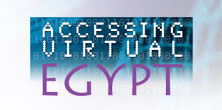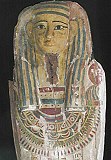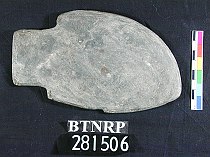

 About the Egyptian Collection
About the Egyptian Collection
With over 1300 ancient Egyptian objects, the collection at Brighton Museum and Art Gallery is one of the largest of the COVES members. The early history of the collection is difficult to piece together as records are uneven, but Brighton Museum was certainly acquiring objects, some of which were excavated, by the late 19th century. Petrie or BSAE sites from which Brighton received objects include Tarkhan, Kafr Ammar, Riqqeh, Memphis, Sedment, Lahun and Gurob. The museum also has objects from excavations by the Egypt Exploration Fund (Abydos, Beni Hasan, Ehnasya, Tel el-Yahudiyeh, Defenneh and Nebesheh), the University of Liverpool (Beni Hasan) and the University of Oxford expeditions to Sudan (Faras and Sanam). Some objects, said to have been excavated by Petrie, were donated by private individuals.
At the moment, the on-line searchable database contains entries for nearly all of the objects, many with images available. The remainder of the collection, including significant objects from Petrie's excavations at Tarkhan, will be added shortly.
Notable people associated with the collection:
Heyward Walter Seton Karr (1859-1938). A well-known collector of flints, particularly from the Fayum district in Egypt. He also donated flints to other COVES member collections including Ipswich Museum and Bexhill Museum.
 Arthur Foster Griffith (?-1933). Alderman of the city of Brighton and from a local family. He was the brother of the well-known Egyptologist, Francis Llewellyn Griffith. A.F. Griffith donated quantities of objects to the museum, many of which seem to have been acquired from Egypt in 1876. The register suggests that he sometimes acted in some capacity as a 'middle man' for objects obtained from excavations.
Arthur Foster Griffith (?-1933). Alderman of the city of Brighton and from a local family. He was the brother of the well-known Egyptologist, Francis Llewellyn Griffith. A.F. Griffith donated quantities of objects to the museum, many of which seem to have been acquired from Egypt in 1876. The register suggests that he sometimes acted in some capacity as a 'middle man' for objects obtained from excavations.
Francis Llewellyn Griffith (1862-1934). Renowned Egyptologist. He worked initially as Petrie's assistant at some of his early excavations in the Delta in the 1880's. Although Griffith was not specifically mentioned in the museum's register, his significant involvement in the excavations at Nebesheh and Defenneh, for example, may have been instrumental in the museum's very early acquisition of material from these sites through the Egypt Exploration Fund. Griffith also directed excavations at a number of sites in Sudan and objects from his excavations at Faras and Sanam were given to Brighton Museum. He was a Professor at the University of Oxford and a bequest after his death led to the creation of the Griffith Institute at the University in 1939. His brother was the prominent local figure, Arthur Foster Griffith.
Margarita Lane. Objects donated include a number said to have been excavated by Petrie.
Constance I. Stobart. In 1938, she donated a collection of objects acquired by her father, Rev. Henry Stobart (1824-1895). Her father visited Egypt in 1854-5 and acquired a collection of Egyptian objects. These were catalogued in a publication Egyptian Antiquities collected on a voyage made in Upper Egypt in the years 1854-1855. Most of the collection was bought by Joseph Mayer of Liverpool.
For more general information on the museum and its collections, click here
To visit the museum’s website, click on www.brighton.virtualmuseum.info